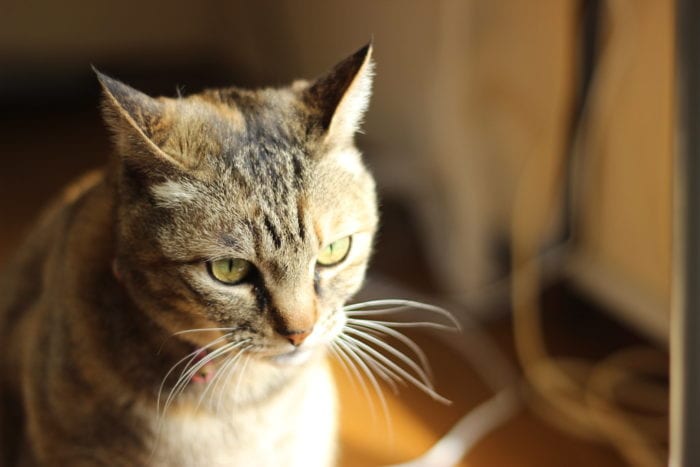
“If they only have food enough supplied for them, [people will] make decisions to feed their own pets over themselves.”
It’s been widely reported that more households than ever have been lining up at food pantries since the pandemic invoked a global financial crisis, but many in Massachusetts are also struggling to feed an extra feline mouth—or several.
Animal welfare organizations in the state have been stepping up since the start of the pandemic to confront pet food insecurity in the wake of the economic downturn, which caused turnout at food banks to skyrocket.
The Massachusetts Pet Food Task Force is one of several local initiatives born out of this increased need. At the nearly 130 food pantries across the Commonwealth it solicits pet food donations for, general demand has risen threefold.
To funnel large supplies of pet food to these pantries beyond individual donations, PFTF works with a network of community nonprofits. It also partners with retailers that request donations from their customers, host food drives, and donate returned purchases.
But in a state with one of the highest rates of cat ownership in the US, cat food seems always in short supply compared to dog food.
PFTF leader Stacy LeBaron, who has worked in animal welfare for more than 20 years, has an explanation—and it begins with a trend in pet ownership in Massachusetts: Households in higher income brackets tend to own more dogs, but those who are lower-income tend to own more cats.
“The more economically strained you are, the higher number of cats you might have,” LeBaron said. “Therefore, you’re less likely to return food. You’re less likely to be able to afford to support a retailer in a food drive.”
All of which feeds into the increase in demand for cat food, because lower-income pet owners are less likely to have the funds to spay or neuter their animals. This combined with the prolific rate at which cats breed spurs a growth in cat populations throughout Massachusetts.
Animal shelters in the state used to euthanize cats due to the strain they put on space constraints, but that is no longer a regular practice. Still, the fear of shelters putting their cats down keeps residents from giving them up when they cannot care for them, according to LeBaron.
While many manage to keep their cats fed despite the difficulties, she also said that owners sometimes abandon theirs, trusting that they’ll find sustenance on the streets. Homeless cats, however, are among those that animal food drives aim to feed.
For Mike Keiley of the Massachusetts Society for the Prevention of Cruelty to Animals-Angell, the above scenarios explain why the need for cat food donations has outweighed that of dog food. Dogs are predominantly cared for by individuals, but cats tend to fall into two categories: house cats and unhoused cats, which animal welfare groups call community cats.
“There’s sort of two populations that we’re serving at the same time,” said Keiley, MSPCA-Angell’s director of adoption centers and programs.
A partner of PFTF, MSPCA-Angell has also been seeing twice as many requests for cat food as it’s received for dog food. Its stock of cat food has continually depleted “very quickly,” according to Keiley, whereas the supply of dog food remains steady week after week.
When ramping up food support at the onset of the COVID-19 pandemic, the organization decided it needed to begin feeding families holistically—meaning both human and animal members of a household should have their bowls filled.
“We’ve learned over and over and over again from our human-service friends in the food pantry,” Keiley said, “that … if they only have food enough supplied for them, [people will] make decisions to feed their own pets over themselves.”
Last year, MSPCA-Angell began partnering with human-service groups to ensure residents can meet their needs at one stop: take one subway ride, and wait in one line before obtaining enough food for the full family.
“Families have been really appreciative because they didn’t know that they could get food support for their animals until it started showing up at the food pantry that they go to regularly,” Keiley said. “So there’s a big awareness component that’s also satisfied when we work together.”
Through it all, donors have been “extremely generous,” according to some organizers. Maybe all the turbulence has rallied philanthropic spirit, said Mike DeFina, media relations officer for the Animal Rescue League of Boston.
“When you make a donation such as food, you really are helping not just a pet, but a person in need,” DeFina said. “These donations, they’ve gone a long way over the last few months.”
But nearly a year into the pandemic, rampant food insecurity remains a major problem—for humans, as well as many pets. With that in mind, DeFina predicts the need for support will continue to grow.
“We may have a vaccine, but the repercussions of COVID-19 are going to extend well into 2021,” DeFina said. “As we get into winter, it could actually increase.”
Angela Yang is a Boston University sophomore covering local news in Greater Boston. She is an intern with GBH and a freelance fact checker for America's Test Kitchen. Previously, she served as editor-in-chief of her college paper, The Daily Free Press.

